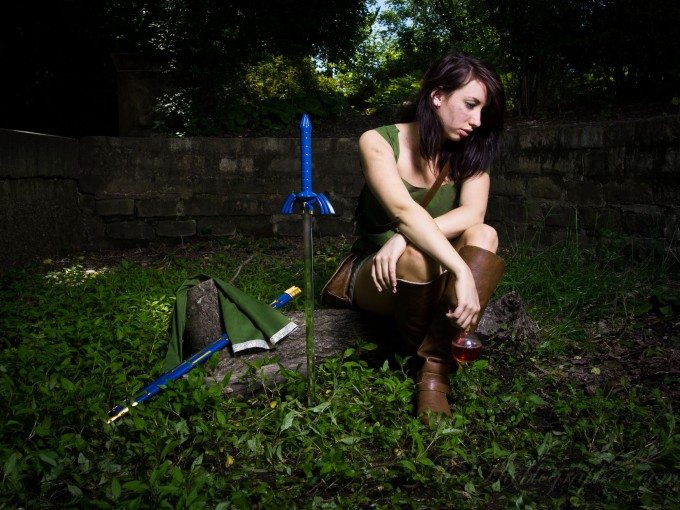Want more useful photography tips? Click here.
A couple of years ago, I faced a pretty big logistical problem on a shoot. I had a reflector, my monolight, the umbrella reflector for the light, my camera, and that was about it. While in a very dark spot of Brooklyn’s Prospect Park, I had to find a way to make the output of my monolight look much larger and in turn better diffused while also making all of my images from that day not look the same due to the lighting effect.
With very little ambient light in the area, the best way to actually light Katie in the above image was to reflect some sort of light onto her. The idea of using a large five in one reflector and bouncing the light from my monolight off of it came to me. But instead of bouncing the light off of the reflective side, I configured it to be translucent. And by placing the reflector in the right spot, we were able to create this image–which was almost totally illuminated by the monolight output being diffused by the reflector. That’s when it hit me that a viable option is to always diffuse a flash with a reflector.
So despite the fact that reflectors are usually designed to reflect existing light, you should also try to use them as a normal bounce surface for a flash. The most common way for many people to use a hot shoe flash is to bounce it off of a ceiling or surface. But when that surface isn’t available, create one with a reflector.


